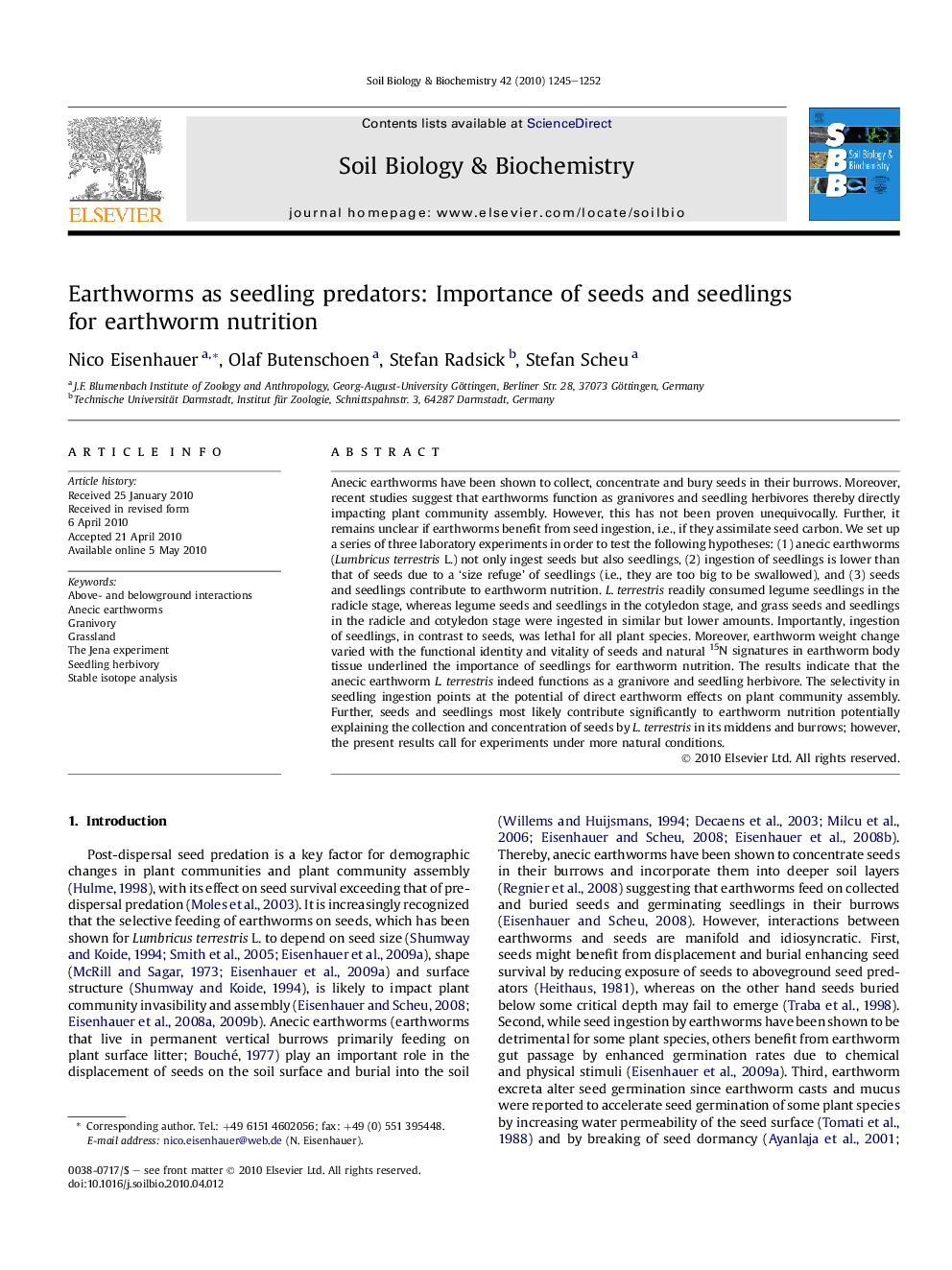| Article ID | Journal | Published Year | Pages | File Type |
|---|---|---|---|---|
| 2026094 | Soil Biology and Biochemistry | 2010 | 8 Pages |
Anecic earthworms have been shown to collect, concentrate and bury seeds in their burrows. Moreover, recent studies suggest that earthworms function as granivores and seedling herbivores thereby directly impacting plant community assembly. However, this has not been proven unequivocally. Further, it remains unclear if earthworms benefit from seed ingestion, i.e., if they assimilate seed carbon. We set up a series of three laboratory experiments in order to test the following hypotheses: (1) anecic earthworms (Lumbricus terrestris L.) not only ingest seeds but also seedlings, (2) ingestion of seedlings is lower than that of seeds due to a ‘size refuge’ of seedlings (i.e., they are too big to be swallowed), and (3) seeds and seedlings contribute to earthworm nutrition. L. terrestris readily consumed legume seedlings in the radicle stage, whereas legume seeds and seedlings in the cotyledon stage, and grass seeds and seedlings in the radicle and cotyledon stage were ingested in similar but lower amounts. Importantly, ingestion of seedlings, in contrast to seeds, was lethal for all plant species. Moreover, earthworm weight change varied with the functional identity and vitality of seeds and natural 15N signatures in earthworm body tissue underlined the importance of seedlings for earthworm nutrition. The results indicate that the anecic earthworm L. terrestris indeed functions as a granivore and seedling herbivore. The selectivity in seedling ingestion points at the potential of direct earthworm effects on plant community assembly. Further, seeds and seedlings most likely contribute significantly to earthworm nutrition potentially explaining the collection and concentration of seeds by L. terrestris in its middens and burrows; however, the present results call for experiments under more natural conditions.
